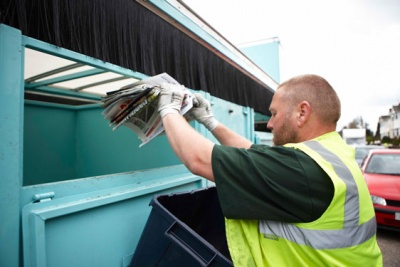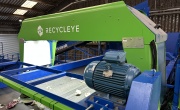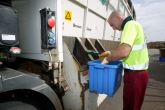TEEP assessments not bringing collection changes

The report, ‘Waste collection authority separate collection arrangements: survey results’, summarises the results of a survey sent to English authorities in April 2015 to gain information on the type and volume of collections in each for paper, plastic, metal and glass.
Of the 321 authorities contacted, 283 took part in the survey. The report suggests the despite over 90 per cent of WCAs undertaking necessity or TEEP assessments, only four per cent have actually implemented changes to their recycling regimes.
‘Duties in relation to collection of waste’
The survey was designed to assess how well local authorities were complying with Waste (England and Wales) Regulation 13(3), which concerns ‘Duties in relation to collection of waste’, and came into effect on 1 January 2015.
The regulation states that ‘every waste collection authority must, when making arrangements for the collection of waste paper, metal, plastic or glass, ensure that those arrangements are by way of separate collection’ where it is technically, environmentally and economically practicable (TEEP).
The government predicts that increasing separate kerbside collections would increase the quantity and quality of recycling; however, co-mingled collections are acceptable where separate ones are not found to be TEEP.
There is, however, some confusion as to what TEEP actually is the government has offered no clear definition.
Survey results
The survey responses indicated that 196 WCAs have assessed their adherence to Regulation 13(3) with another 60 planning to have done so by the end of 2015.
The English authorities taking part revealed that co-mingled kerbside collections are most prevalent, with 2.6 million tonnes of recyclate of a total of 3.9 million tonnes collected co-mingled.
Co-mingled collections often have some segregation of the target materials, with 247 WCAs reporting at least one type of separate collection. Just under half of respondents, 134 WCAs, operate a mix of separate and co-mingled collection of the four types of recyclables surveyed, while 134 and 19 reported ‘co-mingled only’ and ‘separate-only’ collections respectively.
The report also revealed that paper was the most likely to be collected separately (226 WCAs), followed by glass (211), plastic (119) and metals (150), and that 90 per cent of all collections occurred at the kerbside with only 10 per cent occurring at other locations such as ‘bring sites’, street bins or household waste recycling centres.
Suggestions and outcomes
The report concluded that it was expected for co-mingled collections to remain the main method of recycling collection, but it highlighted that a reduction in kerb-side co-mingling, and an increase in separate collections would have the greatest impact on recycling volumes and quality.
It suggested that local authorities should increase their data collection on the type and amount of recycling gathered both at the kerbside and other sites such as bring sites.
Authorities are also encouraged to continue reviewing the outcomes of the survey to ‘ensure they remain valid’, although two thirds of WCAs contacted stated they planned to review their recycling processes within five years in any case.
Assessment not a ‘once and for all time exercise’
Responding to the report, the Chartered Institution of Wastes Management’s (CIWM) Chief Executive, Steve Lee, said: “This is a timely report by the agency. The regulator has quite rightly adopted a monitoring role in the early stages of this requirement, but their work to date shows where they must now concentrate. Recyclate markets are ‘tight’ and quality of secondary materials placed back into the market is key to recycling success. We need the agency to stick to this task.
“Four conclusions from the EA report stick out: first, there is a wide range of separation practices already in place with one, two, three or all four of the specified materials already collected separately by councils or their contractors. Most completed assessments show that further separation is not necessary to deliver high-quality recycling – or if it is, that it is not ‘practicable’ to do so.
“Secondly, just over one in 10 authorities did not respond to the agency’s request for information. An incomplete response is always a concern and non-respondents must now be a follow-up priority for the agency.
“Third, the small number of authorities [four] who did report but have low material separation and don’t plan to complete an assessment must similarly expect closer inspection. As an industry we should be striving for a 100 per cent response to this requirement.
“Finally, the EA rightly points out that assessments by authorities need to be kept under review. This isn’t a once and for all time exercise.”
The ‘Waste collection authority separate collection arrangements: survey results’ report can be found on the Environment Agency’s website.








